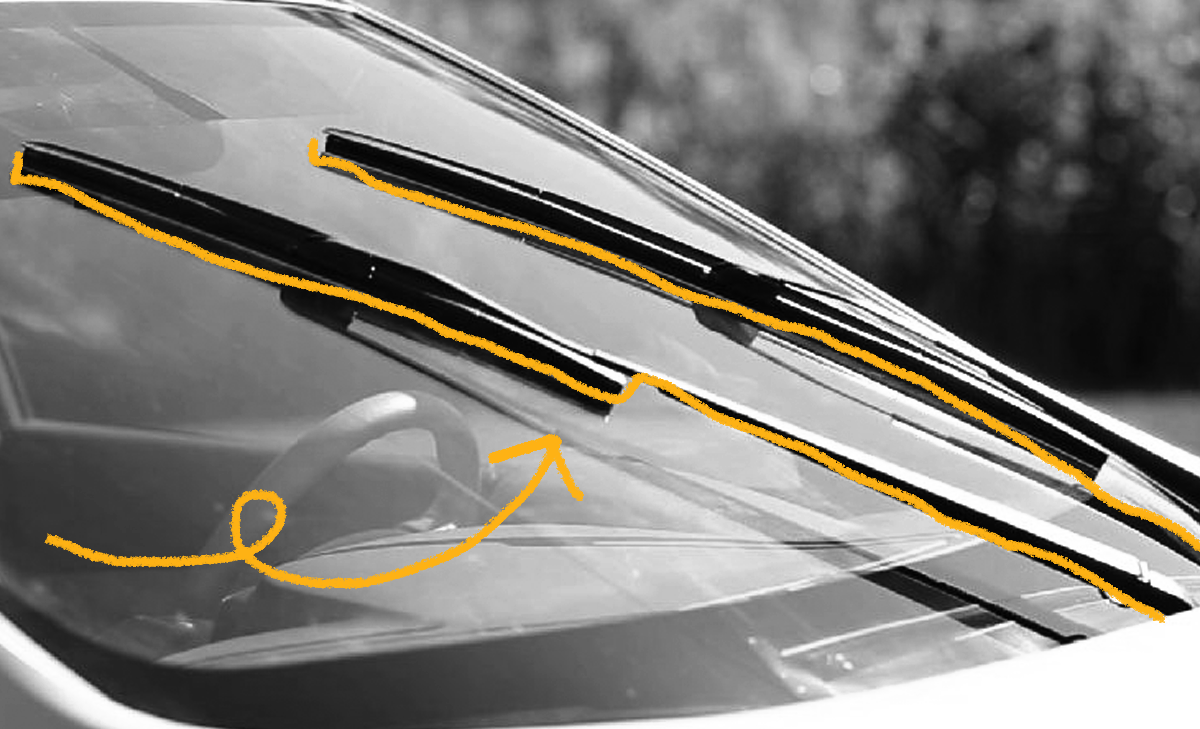A World Without Windshield Wipers
Driving in snow or rain without windshield wipers is unthinkable today. But that’s exactly what drivers had to deal with in the early days of automobiles and streetcars. In 1903, an Alabama native named Mary Anderson was riding in a streetcar in New York City during a storm. She observed how the streetcar operator was forced to open his window to stick his head out. He even used his hands to try to clear away some of the freezing rain and sleet obscuring his windshield. As her trolley crawled along despite the horrendous visibility, Anderson noticed that automobile drivers were forced to pull over and attempt to clear off their windshields. A Southerner used to a warmer and more temperate climate, Anderson was horrified to see these drivers standing out in the cold or opening their windows in the freezing temperatures just to try to clear their windshields.
The First Windshield Wiper
Anderson was determined to find a solution to this visibility problem. In 1903, she created the first successful windshield wiper. Anderson’s device consisted of a set of wood and rubber arms with a spring-loaded lever. The driver could operate the device from within the vehicle, neatly eliminating the problem of having to open a window or pull over to stand out in the cold and clear off the windshield. Instead, Anderson’s windshield wiper allowed drivers to clear away snow, rain, or debris from the warmth and safety of their vehicles. Unfortunately, Anderson’s invention did not take off.

The First Automatic Windshield Wiper
In 1919, an inventor named William M. Folberth patented the first automatic windshield wiper. His design used a vacuum-powered system to clear snow and rain off the windshield. His system became standard on automobiles in the 1940s and 1950s. However, Folberth’s windshield wipers really only had two settings: you could turn them on, or you could turn them off, but that was about it. While they were a huge step forward, there was still work to be done.
Intermittent Windshield Wipers
Many inventors patented the idea of intermittent wipers. However, it was Robert Kearns, an engineering professor at Wayne State University, who really helped the idea take hold. Kearns struggled to drive in the rain due to an eye injury caused by an errant champagne cork at his wedding. As he tried to find a solution to his problem, he realized that our eyelids – which he likened to the windshield wipers of the eye – don’t blink constantly, but rather every few seconds. Based on this concept, he created a set of intermittent windshield wipers, which he mounted on his Ford Galaxie. In 1962, he applied for a patent and even presented his invention to engineers at the Ford Motor Company. In 1969, Ford began producing cars with intermittent windshield wipers.
Kearns v. Ford Motor Company
While the addition of intermittent wipers on Ford vehicles was good news for drivers, it was not good news for Kearns. In 1976, Kearns disassembled the wipers on a Ford and discovered that the automotive company had completely stolen his design. Kearns was then caught up in legal battles with Ford, Chrysler, and twenty-five other car manufacturers until 1995, when he lost his lawsuits and was awarded just $30 million from Chrysler – significantly less than the $325 million he had filed for. Sadly, he also lost the claim to his patents. Kearns passed away in 2005, and three years later, Greg Kinnear starred in a movie about Kearns’ battle with the Ford Motor Company called Flash of Genius.
Safety & Innovation
While Kearns sadly never received the credit he deserved, his invention undeniably changed the face of driving forever. His intermittent windshield wipers made driving in inclement weather much safer than ever before. By preventing accidents due to poor visibility, Kearns’ intermittent windshield wipers have saved countless lives. And in the years since Ford first put Kearns’ invention into their cars, windshield wiper technology has advanced even further. Today, rain-sensing wipers are able to start themselves, ensuring that a driver’s field of visions stays clear. As a result of these innovations, modern drivers rarely give windshield wipers a second thought. But these simple devices should not be taken for granted – after all, windshield wipers are incredibly important safety items, and without them, we would all still be sticking our heads out the window to see just like Mary Anderson’s streetcar driver!



